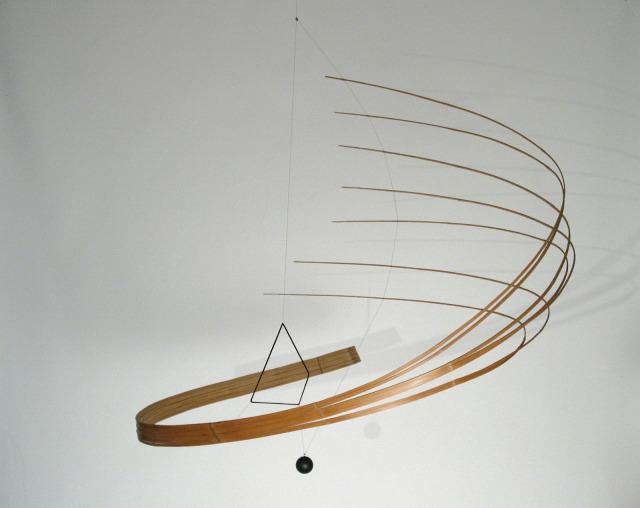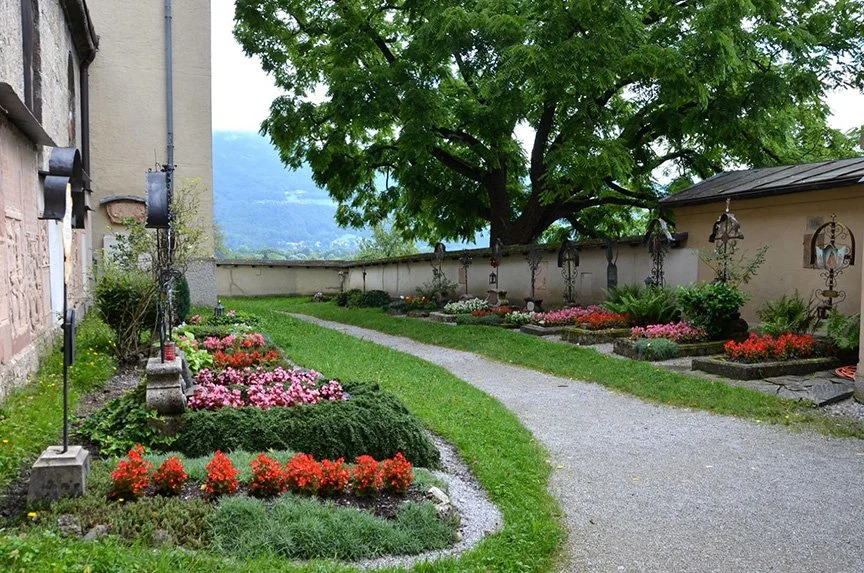The Sound of Music: Concept
The Sound of Music is a journey of self-discovery and courage. Initially unsure of her place in the world, Maria leaves her sheltered life as a Novice in a convent to become a governess, where she learns to assert her individuality and in doing so brings love to the Von Trapp family and, unexpectedly, to herself. As her love for Captain von Trapp and his children deepens, Maria must confront her own fears and doubts, stepping into a new life where she takes on the responsibility of both nurturing a family and fighting for what she believes in. As the threat of Nazi occupation looms, Maria and the von Trapps face a pivotal choice: remain within the security of their privileged life or risk everything to escape oppression and preserve their values. In choosing to leave the safety of what is known, they embrace the courage to forge their own future, seeking not just survival, but a life defined by love, individuality, and freedom.
Nonnberg Abbey is safe and secure for those who want to escape the decisions and complexities of the world. It is a place of reflection and sanctuary, made safe by keeping the nuns separate through custom and seclusion. Nonnberg Abbey is a place for Maria to pass through. She returns there to collect herself when she discovers that she is in love with Captain Von Trapp; she returns there to get married; and they return one more time to seek refuge from the Nazis. Maria discovers that she could not spend her life in Nonnberg Abbey: it would be a place of oppression were she to try; but it could be a place of refuge along her journey.
The Von Trapp Manor is a gilded cage. It is delicate, sculptural and beautiful. At first neither the children nor Captain Von Trapp benefit from the beauty: they are its inmates, trapped by the Captain who has closed out the world to protect his broken heart. But this is also a place where love is waiting to be let in. Maria brings love - in the form of compassion, joy and music, to the children and to Captain Von Trapp; but love is also brought to Maria - from the children, and, unexpectedly from the Captain himself. For a moment, it is transformed into a place of happiness - of family, of love.
The third institution of oppression is the fascist government. This is not a place, although the oppression is most keenly felt in the concert hall. The Felsenreitschule, where the Salzburg Festival has been held since the 1920s has a fascist feeling to it and could serve as inspiration for the concert hall.
Parameters and Considerations
The creative team needed to execute its vision under the constraints of a European repertory company with a tight schedule.
The grant from the government of Bulgaria that made this production possible came in late August. By the end of September of 2023, when the design team as assembled, we only had about a month to complete the design.
The Sound of Music was expected to run in repertory. The stage crew needed to be able to put up the set in a single day, and strike it just as quickly.
The Sound of Music was designed for the Opera House in Sofia, but the show would also need to be able to be performed in one of three outdoor venues. The outdoor venues were all at risk of high winds, so the set needed to be stable, free-standing and water resistant. It also couldn’t use fly lines for any major piece of scenery, nor could it rely on wings to hide scenery in outdoor venues.
The Sound of Music was to be one of six premieres in the Opera Theatre’s schedule between January and June. The production team that built the sets was also responsible for change-overs between shows in rep, further compressing the time for the production staff to execute the design.
Research
I divided research into three steps. First, I started by researching abstract sculpture to find forms that embodied the movement and delicacy I wanted for the set. I focused on curves, sweeping lines, and a sense of lightness, while also looking for contrasting shapes—either light and flowing, or strong, grounded, and stable—to create the right balance and dynamic energy.
Next, I explored architectural forms that blurred the boundaries between art, sculpture, and architecture. These didn’t need to be historically tied to the play’s period, but I was focused on finding ways to design structures—particularly stairs and walls—that could sweep, turn, and flow, giving them a sense of movement and fluidity.
Finally, I researched the real-world locations referenced in The Sound of Music and some of the iconic film locations. While it was never th intention to replicate iconic film or real-world locations like Nonnberg Abbey, the Von Trapp Manor, or Felsenreitschule, it was important that the sculptural sculptural elements felt authentic to the world of the play. The real-world sites such as the Abbey's austere architecture and the Von Trapp Manor's elegance would inform the design, and the research allowed me to focus on capturing the essence of these places, guiding the emotional tone of the set.

















Early Concept models
With 3 weeks between the first concept meeting and my design presentation to the producers of the Opera Theatre in Sofia, Director West Hyler and I developed the design through a series of sketch models, refining until we reached an initial form and flow for the show. Through this process we simplified the set to one revolving music box scenic unit in front of a mountain scape that would be flexible enough to be a space for all of our locations.
Nonnberg Abbey
Nonnberg Abbey feels old, simple and monolithic. The real Nonnberg Abbey is indeed quite simple: it has modest proportions and is made of stone and plaster with very little adornment. Its walls have a gentle but determined shape that embraces from the inside but feels strong and immovable from the outside - much like some of Richard Serra’s steel enclosures. Rather than use illustrative walls, the set for Nonnberg Abbey takes inspiration from the simplicity of the convex shape holding the outside world at bay.
The Von Trapp Manor
The set for the Von Trapp Manor should be light and airy. It should be formal, and even oppressive if treated too formally, but when treated as a place of joy it should feel like it is floating. There are specific needs to be addressed - stairs, doors, and the like - but structure should be kept to a delicate minimum, emphasizing curves and openness.










Further Development
In the initial proposal, our main set unit featured a light gray helix with gold accents, pierced by a geometrically increasing arcade. This set piece included a large wooden double door, a French door, a curved staircase with a landing, and a balcony. It was also designed with sconces, a front door light, and removable sheer curtains, adding both functionality and visual interest. This unit served as the foundation for all of the scenes, and locations were changed by rotating the unit. The two largest arches facing out, creating a high convex wall and making the stage space tight and Intimate, became the Mother Abbess’s office. It was the Von Trapp family living room when the unit was open to the audience, and when the french door facing out, with the interior seen in the back, it became the terrace.
The concept of a single elegant unit set was appealing to the Opera Theatre, but we knew we needed flexibility. We felt that keeping the main set fixed on stage throughout the entire production would limit the fluidity of the play. Specifically, we wanted the ability to focus in on Maria’s return to Salzburg from the mountains, as well as open up the space during the von Trapp family's dramatic escape at the end. To achieve this, we designed the set to be modular, allowing it to break apart and be reassembled in real-time, enhancing both the narrative flow and visual dynamism.
The company lacked both the time and resources to build a large, sculptural mountain-scape. Additionally, there was concern that the mountain-scape might feel redundant during their outdoor summer season. As a solution, we explored using projections for the indoor performances at the Opera Theatre. We initially designed projections for all the outdoor scenes, but quickly realized that they were most effective in moments that specifically referenced mountain locations—such as the opening scene and when the Von Trapps leave the Abbey at the end—or in scenes involving weather, particularly the gazebo and Maria’s bedroom.
As we developed the different locations we designed elements to be added without taking away from the elegance of the main set unit. We quickly discovered that other than pieces of furniture, we needed pieces for atmosphere and composition but not for illustration. Palettes of pine trees were used to create depth and texture in all of the outdoor scenes. We added box hedges and a balustrade for the terrace. And we created four graves for the von Trapp family to hide behind.











